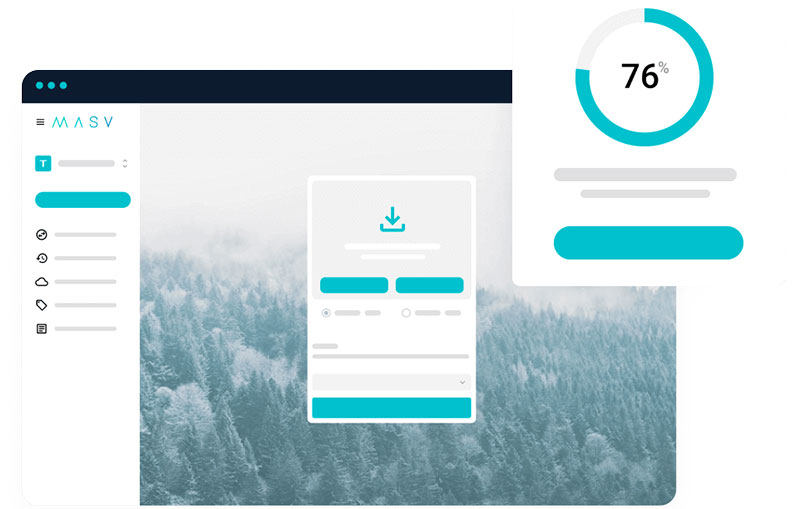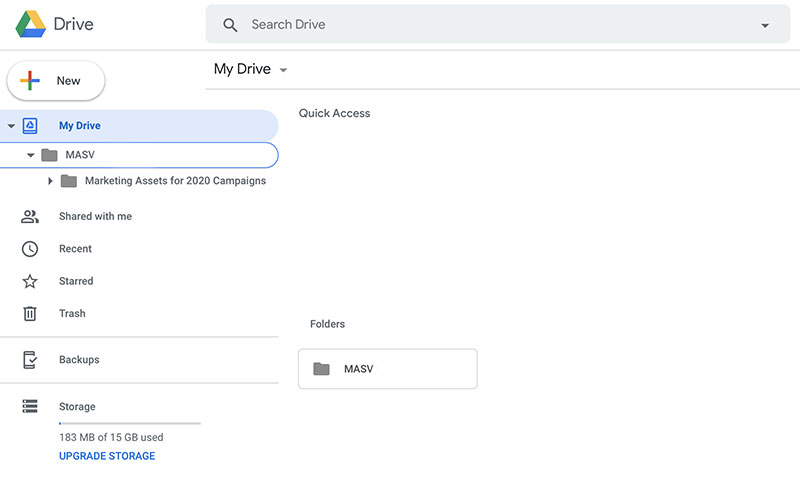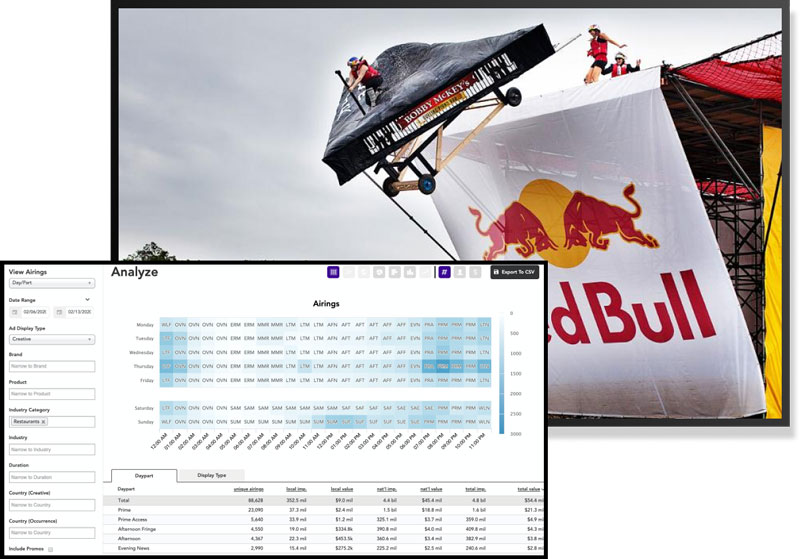Jim Donnelly from online and cloud-based managed file transfer specialist MASV talks about the operational challenges involved in targeting markets through user-generated content.

As advertising and marketing material floods users’ favourite feeds and channels, often in the form of AI-generated content, audiences are tuning out and seeking authenticity. In response, brands today are likelier to target their markets through user-generated content (UGC) from real customers. However, creator content can pose major operational challenges, especially where marketers are still trying to manage it with standard tools like email links or Google Drive.
In 2025, finding creators with content to share isn't the problem – it’s handling the abundance of 4K files, releases and rights with the professionalism and precision needed to achieve an effective result.
According to Jim Donnelly, Head of Editorial at MASV, the next marketing differentiator will be more precise, built-for-purpose workflows. “Brands can professionalise their UGC operations with enterprise-grade workflows that support brand safety, compliance and speed, and that include mechanisms for monitoring and maintaining control throughout the creation process,” he said.
MASV specialise in online and cloud-based managed file transfer. The company has developed tools that keep track of large numbers of individual files in motion by tagging, tracking and organising transfers.
Value of Authenticity
Jim talked about the value that brands see in UGC, and the advantages it may have over a paid-for media production process engineered to deliver exactly what a marketing team wants. “While brand content is often more polished and professional, the secret sauce to UGC is its authenticity and trustworthiness as content produced and shared by customers and fans with a genuine appreciation and passion for that product or service,” he said.
“UGC speaks to other consumers because it’s created by people just like them. MASV’s 2024 report on the state of user-generated content indicated that UGC enjoys extremely high levels of trust among consumers. 81% of those we surveyed said they trust UGC more than brand or paid influencer content, and a further 85% indicated that they rely on UGC video before making a purchase.
UGC also adds an element of serendipity to a brand’s strategy by uncovering ways to connect with their customer base that they hadn’t thought of before, resulting in more attachment, loyalty and a distinct identity that endures over time.

Management Workflows for UGC
Although taking advantage of UGC is obviously less expensive and time-consuming than creating polished brand content, Jim noted that running a manual ingest pipeline can put upward pressure on costs due to wasted time and inefficient workflows.
“An automated UGC collection process can help because it reduces time-consuming manual technical work – for instance, downloading and then re-uploading files to multiple locations – and leaves more time for valuable but subjective tasks like brand safety,” Jim said. “Automating metadata and tagging helps organize content by risk level or category, and allows teams to focus their attention where it’s most needed without slowing down overall content ingestion.”
“Building an efficient UGC pipeline starts with strategy and planning – defining goals, researching past content and reaching out to creators if new content is needed. Then once you have reviewed and selected the content you want to use, it’s essential to get permission to use it from the creator or rights holder.
“A primary bottleneck most UGC pipelines encounter is content collection and submission. Common failure points include file size limitations, slow speeds and unreliable transfers. This is where a robust web-based file uploader can really help. From there you will need the means to distribute content to the preferred channels, measure against your goals, and give credit to the creators.”
Acquisition and Ethics
Jim noted that acquiring UGC may not be entirely straightforward. The MASV report mentioned above showed that most brands acquire UGC by searching for and reposting it on social media, but a close second was the use of online uploading tools that encourage creators to submit specific content. Others download material directly from social media or other websites, via email or consumer-grade file sharing apps, or by using dedicated UGC platforms.
But another finding is that many brands don’t acquire UGC in an ethical way. “Among the creators we surveyed whose content was used by brands, said it had been used without permission, and many hadn’t received credit from the brand,” said Jim.
“Acquiring UGC in this manner can have long-term damaging impacts to the brand among the creator community, who are likely to consider such brands to be untrustworthy. Reaching out and establishing a relationship with that creator helps build trust and ensures they don’t send your company a takedown notice or invoice a few months down the road.
Content Collection for UGC
Jim recommends that brands consider various technical issues before they start working with UGC files. One is efficiency. “The UGC ingest workflow should be as efficient as possible to save steps for users as well as marketing teams,” said Jim. “For example, you can ensure that creators submit content that meets the brand’s specifications such as video file size, file format or other specs.

“Speed of acquiring UGC to enable fast turnaround for pressing events, news or sports is important when working with independent content creators and others who want to participate in hot stories as they unfold. Cybersecurity also needs to be considered when ingesting from a wide rage of sources.”
Manual content collection workflows frequently become obstacles. Manually ingesting video or other content before sending it to multiple destinations is particularly inefficient. He noted, “Unless persistent metadata is tagged to incoming video files, once they have been uploaded, management can become a huge challenge – or a lot of work for someone managing a spreadsheet.
“One common logistical challenge for brands using traditional file upload processes is that creators usually need to sign in to an account, or to install an application used to upload content. While it feels like a mild inconvenience when working with a single creator or small group, adding these steps becomes untenable when asking dozens or hundreds of creators to submit content.
“Diverse file formats and sizes can be a challenge, which is why it’s important to set and enforce file upload rules when receiving content. Bandwidth can also be an issue, depending on the file sizes and the creator’s connectivity.”
Automated Transfer and Ingest Services
With this wide range of factors to monitor and control, automated purpose-built software and services are a practical way to address a number of them at once. Jim described the products that MASV develops.
Users set up MASV’s transfer and ingest services to integrate with their existing storage systems, while the creators themselves use customised MASV Portals to interact with the system. Automated MASV watch folders can be used to send, receive and store large media files without coding.
The Portals are web-based, large file uploaders with a drag-and-drop interface and many features aligned with UGC use cases. They integrate with commonly used third-party cloud tools, and can be embedded into websites or SaaS platforms to facilitate reliable file uploads of almost any size using ordinary devices. Instead of downloading software or logging in to MASV to upload content, creators simply drag media into a Portal.
To help with file management, MASV Portals can be designed to capture custom metadata about content in real time during ingest. Users can define which metadata to collect, design forms prompting users to supply details, and then evolve those requirements as needed. This metadata gives the recipient the ability to tag and catalogue the content and, in some cases, route delivery to the correct project, event, news story and so on.

Efficiency in Motion
For efficiency, the uploader can be integrated with a connected storage target and media asset manager. MASV Portals enable one-to-many uploads with embedded metadata, so marketing teams can ask creators to upload once and have their content sent to multiple destinations simultaneously.
Speed is always going to be an issue for any kind of content creation, but in this case, ensuring thousands of users can instantly upload content would be unmanageable without a service like MASV Portals to make it faster and easier for individual creators to share content.
Bandwidth is another area where MASV can help. MASV’s acceleration technology takes advantage of all available network bandwidth to transfer a file, achieving the fastest possible speed for that specific network connection. Regarding cybersecurity, services like MASV can scan UGC files as users upload them via the MASV Portals, and contain malware to prevent it from penetrating the network.
Customisation
Recently, Portals have been used by Special Operations Studios when creating a music video for singer/songwriter Fiona Apple, and by The Diamond Bros during production of a documentary about the rock band Frightened Rabbit to ease the process of gathering fan-generated content.
Special Operations Studios and Fiona Apple, for example, used a customized MASV Portal, branded to the clients’ specifications, integrated with a QNAP NAS to automate simultaneous content ingest to storage and the Frame.io cloud-based MAM, while Portals’ ease of use enabled non-technical users to upload content via mobile devices, without even needing a computer.
Custom forms were set up for legal sign off and for tracking the names and contact information of uploaders. The MASV integration with Frame.io allowed various teams to view, comment on, and categorize footage remotely and in real time. massive.io





















